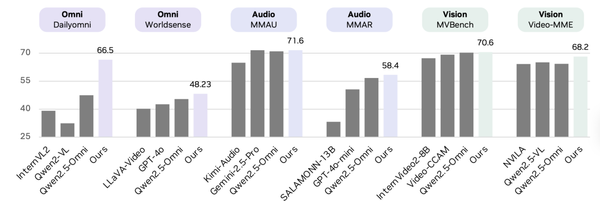CodeClash: A New Benchmark for Evaluating Large Language Models in Multi-Round Coding Competitions
CodeClash: A New Benchmark for Evaluating Coding LLMs
Researchers from Stanford, Princeton, and Cornell have introduced a novel benchmark, CodeClash, designed to assess coding skills of large language models (LLMs) in multi‑round competitive tournaments. Unlike narrowly defined coding tasks, CodeClash evaluates the ability to achieve high‑level, strategic objectives — closer to real-world software engineering.
---
Why CodeClash?
The researchers argue that traditional benchmarks—such as fixing bugs, implementing algorithms, or writing unit tests—do not fully reflect the challenges faced in actual development work.
> Real-world engineering is driven by goals like user retention, revenue growth, and cost reduction. Achieving these requires breaking down objectives into actionable steps, prioritizing them, and making strategic decisions.
The goal: Align LLM evaluation with the iterative, goal‑oriented nature of real-world development.
---
How CodeClash Works
Objective: Build the most effective codebase for a high-level competitive task.
Tournament Structure
- Edit Phase: LLMs modify their codebases to improve performance.
- Competition Phase: Updated codebases compete in a code arena.
- Evaluation: Winners are determined by objectives such as:
- Score maximization
- Resource acquisition
- Survival
Code Arenas Examples:
- BattleSnake – Grid-based survival
- Poker – No-limit Texas Hold’em
- RoboCode – Tank combat

> LLM agents start with a short description of the setting. While mechanics, example bots, and suggested strategies exist in the starter codebase, models must proactively discover and use this information.
---
Insight Gathering
At the end of each round:
- Logs are stored in a “logbase”.
- LLMs analyze these logs to:
- Improve their own codebase.
- Adapt to opponents' strategies.
---
Experimental Results
Scale:
- 1,680 tournaments
- 8 LLMs tested, including:
- Claude Sonnet 4.5
- GPT‑5
- Gemini 2.5 Pro
- Qwen3‑Coder
- Grok Code Fast
Findings:
- No single model dominated across all arenas.
- Anthropic and OpenAI models showed a modest overall edge.
- In 6‑player tournaments:
- Winners captured 28.6% of points
- In 1‑on‑1 competitions:
- Winners captured 78.0% of points
Code Analysis Task
- GPT‑5 excelled at analyzing opponent-generated codebases, outperforming Claude Sonnet 4.5.
- However, merely inspecting opponents’ code did not guarantee victory.
---
Broader Context: AI Creation & Monetization
While CodeClash focuses on competitive coding evaluation, AI-driven platforms like AiToEarn官网 extend these ideas into multi‑platform content creation:
Key AiToEarn Features:
- AI content generation
- Cross‑platform publishing to:
- Douyin, Kwai, WeChat, Bilibili, Rednote
- Facebook, Instagram, LinkedIn, YouTube, and more
- Analytics & model ranking
- Open-source monetization framework
Parallel to CodeClash:
Both integrate iterative improvement, competitive evaluation, and data-backed decision-making.
---
Limitations & Future Work
Current Constraint:
- Arenas are smaller than real-world systems.
Next Steps:
- Address larger codebases.
- Support multiple, simultaneous competitive objectives:
- Performance
- Security
- Maintainability
Goal: Bridge academic benchmarks with enterprise-scale systems.
---
Takeaway
CodeClash is a strategic, competitive benchmark capturing how LLMs perform in dynamic, evolving environments—much like human engineers do.
Future expansions could make it a powerful tool for aligning AI coding capabilities with industry-scale demands.
Platforms like AiToEarn官网 demonstrate how integrated systems can link generation, analysis, and distribution — providing a glimpse into what scalable AI-driven development ecosystems can achieve.




